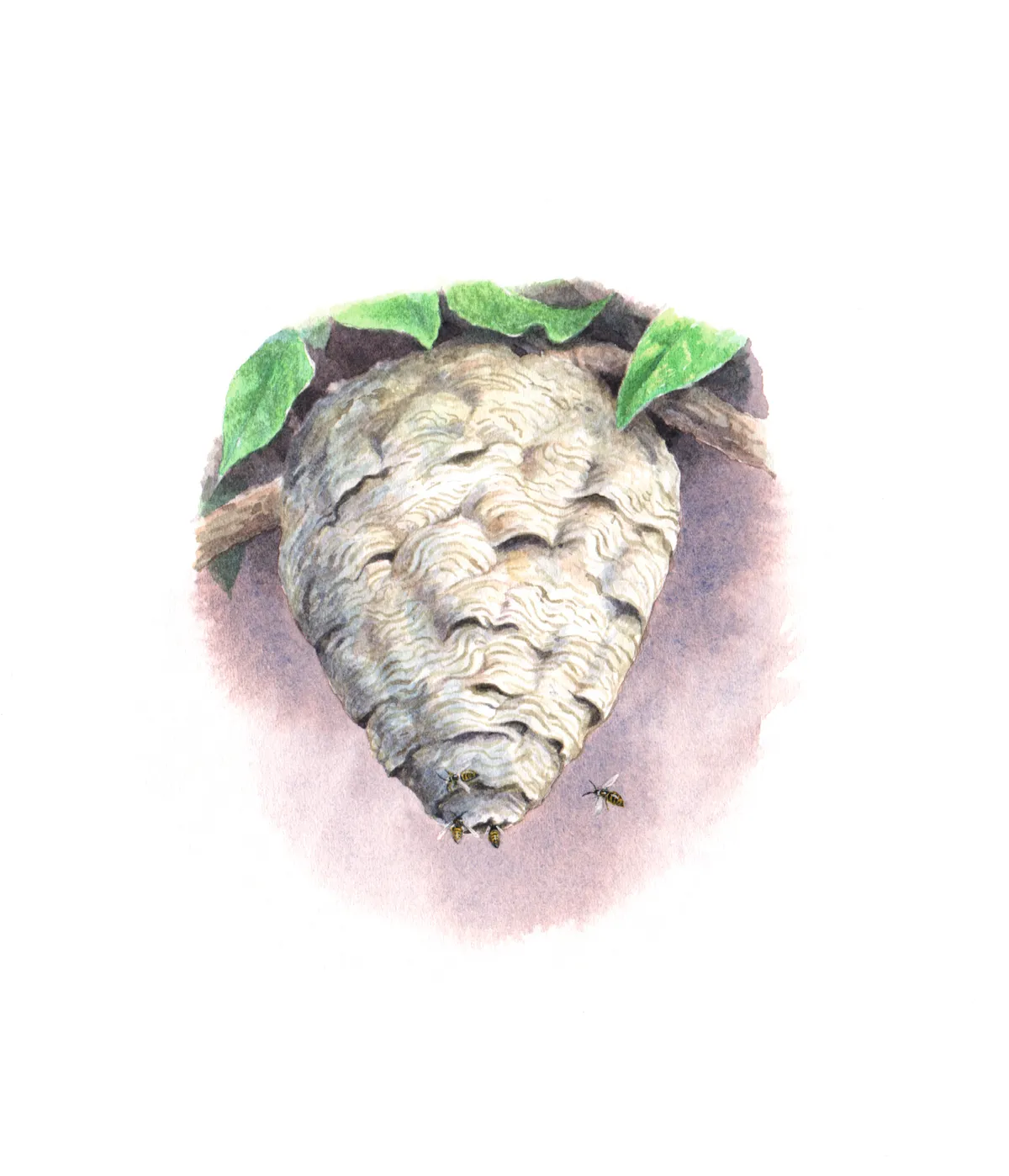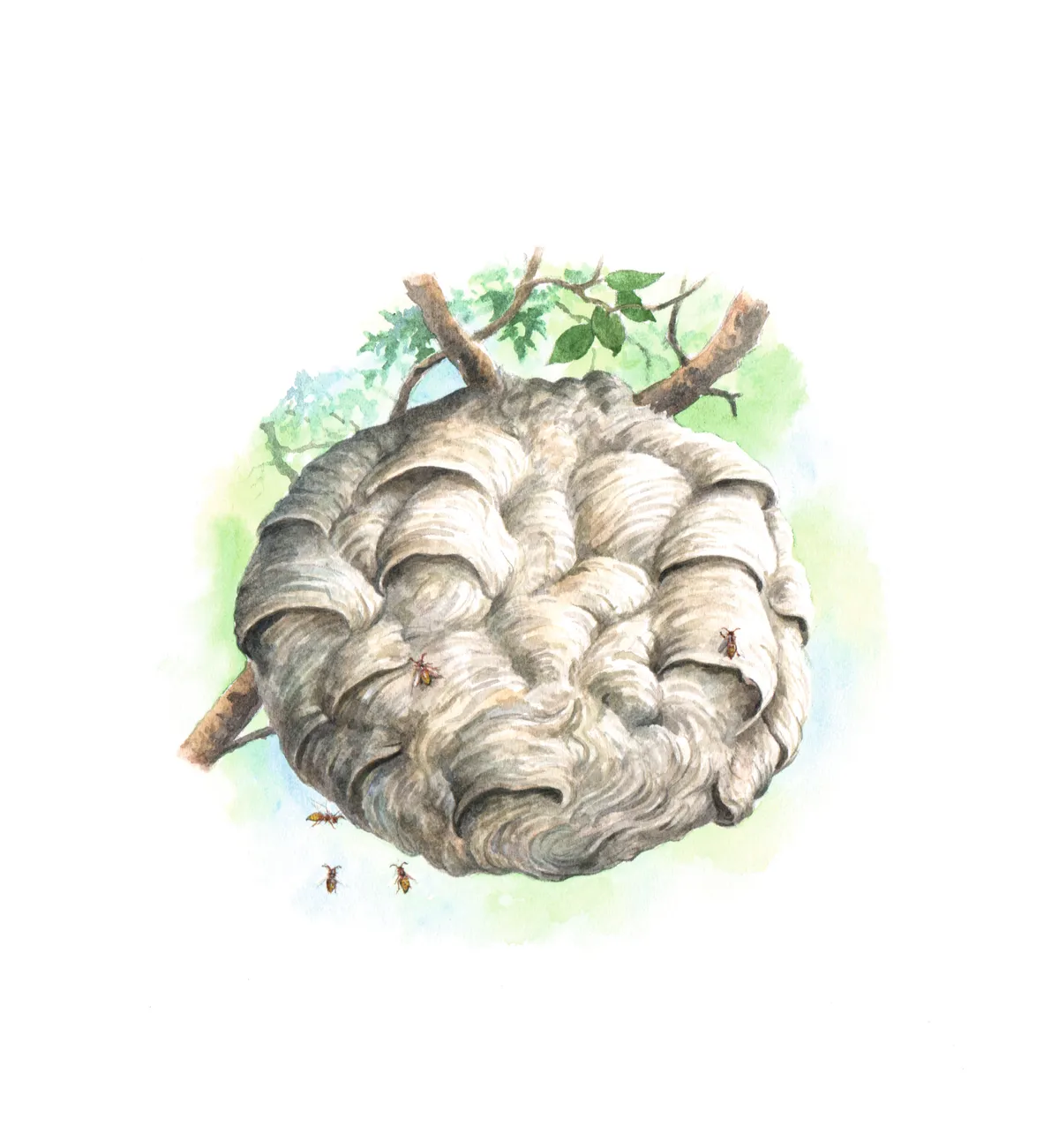What are wasp nests made of?
While bees build with wax, wasps use papier-mâché made from wood scraped from nearby surfaces and chewed to a pulp. Each tiny mouthful is pasted in place and shaped to perfection using their mandibles and antennae.
- Parasitic wasps and white butterflies: how this 'zombie' wasp invades a caterpillar's body
- Bee and wasp stings: what they are, why they hurt and how to treat a sting
How do wasps make their nests?
Each nest is started by a lone queen. First she builds a sturdy downward stalk, which she daubs with a chemical that repels ants. The stalk opens into an inverted cup that she fills with six-sided cells – each one a nursery for a single larva.
Wasps share their penchant for hexagons with bees – the tessellating form of symmetric, same-shaped polygons makes the most efficient use possible of precious building materials. Believe it or not, wasps are even better at this than bees. At every Y-shaped intersection, where the walls of three cells meet, the wasp obsessively checks her angles – calibrating each to a perfect 120 degrees.
When the first comb is complete, usually containing in the region of a dozen cells, the queen surrounds it with curved walls. The result is a golfball-like starter-nest, in which the first brood of larvae hatch and develop into workers.
Now the building work picks up. A second, larger comb is suspended from the first by one or more stalks, and again enclosed by curved walls. More combs are added and enclosed as the colony expands over the course of the summer. Then, come autumn, the entire structure is abandoned for good.
Common types of wasp and hornet nests
All social wasp nests look superficially similar but variations in the size, shape, location and position of the nest opening can help you work out which species made them.
European hornet
Vespa crabro

Nests are usually cylindrical, with a wide opening at the bottom. Cavity nesters and commonly found in chimneys, barns and other our buildings along with attics and hollow trees.
Median wasps
Vespula vulgaras

Grey conical nest, with a small opening positioned slightly off centre at the base of the nest. Usually built at less than 2m above the ground in bushes or trees and only rarely in buildings.
Common wasp
Dolichovespula media

Beige and usually conical nest with a small opening at the lower end. Nests in cavities above or below the ground, though also behind fascia and soffit boards or roof cavities.
The common wasp: what they eat, how they build their nests - and why a wasp stings
Asian hornets
Vespa velutina

Spherical or pear-shaped nest, which can grow very large and has the opening to the side. At least 10m above ground. Non-native; only a handful of confirmed UK records to date.
(Illustrations show completed nests)